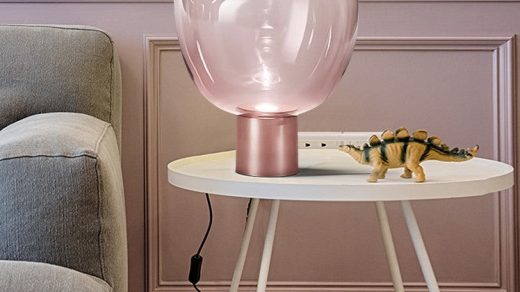Create a Cozy Ambiance with Beautiful Bedroom Lights
The significance of bedroom lighting extends far beyond mere functionality; it plays a crucial role in shaping the overall ambiance and mood of the space. A well-lit bedroom can enhance relaxation, promote better sleep, and even influence one’s emotional well-being. The bedroom is often considered a sanctuary, a personal retreat where individuals unwind after a long day.
Therefore, the lighting choices made in this space can either contribute to a serene environment or create an atmosphere that feels chaotic and uninviting. Moreover, the right lighting can also enhance the aesthetic appeal of the bedroom. It can highlight architectural features, accentuate decor elements, and create focal points that draw the eye.
For instance, strategically placed lights Makalco can illuminate artwork or photographs, adding depth and character to the room. In essence, bedroom lighting is not just about visibility; it is about crafting an experience that resonates with comfort and tranquility.
Types of Bedroom Lights
Ambient Lighting: Setting the Tone
Ambient lighting is the primary source of illumination in a room, providing general light that allows for easy navigation and daily activities. Ceiling-mounted fixtures, such as chandeliers or flush mounts, are common choices for ambient lighting. They distribute light evenly across the space, ensuring that every corner is adequately lit.
Task Lighting: Illuminating Activities
Task lighting is another essential category, designed to facilitate specific activities such as reading or working. Table lamps placed on nightstands or desk lamps positioned on work surfaces provide focused light that helps reduce eye strain during close-up tasks. Additionally, wall sconces can serve as effective task lighting when mounted beside a bed or reading nook.
Accent Lighting: Highlighting Features
Accent lighting, on the other hand, is used to highlight particular features or decor elements within the bedroom. This could include LED strip lights under furniture, spotlights directed at artwork, or even decorative lanterns that add a touch of charm.
Choosing the Right Light Fixtures
Selecting the appropriate light fixtures for a bedroom involves considering both functionality and style. The first step is to assess the size and layout of the room. A spacious bedroom may benefit from larger fixtures or multiple light sources to ensure adequate illumination, while a smaller room might require more compact options to avoid overwhelming the space.
Additionally, the ceiling height can influence fixture choice; for instance, pendant lights can add visual interest in rooms with high ceilings but may feel out of place in lower spaces. Style is equally important when choosing light fixtures. The design should complement the overall decor theme of the bedroom.
For a modern aesthetic, sleek and minimalist fixtures in metallic finishes may be ideal, while a more traditional space might call for ornate chandeliers or vintage-inspired lamps. Furthermore, color temperature plays a significant role in setting the mood; warm white lights create a cozy atmosphere, while cooler tones can feel more energizing and refreshing.
Creating a Relaxing Atmosphere with Soft Lighting
Soft lighting is essential for fostering a calming environment in the bedroom. Harsh, bright lights can be jarring and counterproductive to relaxation, making it difficult to unwind at the end of the day. Instead, incorporating soft lighting options can help create a soothing atmosphere conducive to rest and rejuvenation.
One effective way to achieve this is by using lamps with dimmable features or shades that diffuse light gently. Layering different types of lighting can also contribute to a more relaxed ambiance. For example, combining ambient lighting with softer task lights allows for flexibility in brightness levels throughout the evening.
As bedtime approaches, dimming the lights gradually signals to the body that it’s time to wind down. Additionally, using warm-colored bulbs can enhance this effect; studies have shown that warmer light temperatures promote melatonin production, which is essential for quality sleep.
Incorporating Decorative Lighting Elements
Decorative lighting elements serve not only as functional sources of illumination but also as artistic statements within the bedroom. These fixtures can add personality and flair to the space while enhancing its overall aesthetic appeal. For instance, a beautifully designed pendant light can serve as a stunning focal point above the bed or in a reading nook, drawing attention and admiration.
Wall sconces are another excellent way to incorporate decorative lighting while saving space on nightstands or dressers. They come in various styles and designs, from sleek modern options to vintage-inspired pieces that evoke nostalgia. Additionally, string lights or fairy lights can be creatively draped around headboards or along walls to add a whimsical touch and create a cozy atmosphere.
These decorative elements not only illuminate but also contribute to the room’s character and charm.
Using Dimmers and Smart Lighting
Dimmers are an invaluable addition to bedroom lighting systems, allowing for greater control over brightness levels and enhancing versatility in how light is used throughout the day. By adjusting the intensity of light, dimmers enable users to create different moods depending on the time of day or activity taking place. For instance, bright lighting may be preferred during morning routines to energize and awaken the senses, while softer lighting is ideal for winding down in the evening.
Smart lighting technology has revolutionized how we interact with our living spaces, including bedrooms. With smart bulbs and systems, users can control their lighting through mobile apps or voice commands, offering unprecedented convenience and customization. Smart lights can be programmed to change color temperatures throughout the day or set on schedules that align with daily routines.
This technology not only enhances comfort but also promotes energy efficiency by allowing users to turn off lights remotely or set timers.
Tips for Proper Placement of Bedroom Lights
The placement of bedroom lights is critical in achieving optimal functionality and aesthetic appeal. When positioning ambient lighting fixtures, it’s essential to ensure that they provide even illumination across the entire room without creating harsh shadows or dark corners. Ceiling fixtures should be centered in relation to the room’s layout, while floor lamps should be placed strategically to fill any gaps in light coverage.
Task lighting requires careful consideration as well; bedside lamps should be positioned at an appropriate height for reading without straining the neck or eyes. Ideally, they should be placed within arm’s reach on nightstands for easy access during nighttime hours. Wall sconces should be installed at eye level when seated to provide adequate light without glare.
Additionally, accent lighting should be directed toward specific features or decor elements to draw attention without overwhelming other aspects of the room.
Maintenance and Safety Considerations for Bedroom Lighting
Maintaining bedroom lighting involves regular checks and upkeep to ensure safety and functionality. Dust accumulation on light fixtures can diminish their brightness and affect overall performance; therefore, routine cleaning is essential. Light bulbs should also be checked periodically for signs of burnout or flickering, which may indicate that they need replacement.
Safety considerations are paramount when it comes to electrical fixtures in any room, including bedrooms. It’s crucial to ensure that all wiring is up to code and that fixtures are securely installed to prevent accidents. Using bulbs with appropriate wattage for each fixture helps avoid overheating and potential fire hazards.
Additionally, utilizing surge protectors for lamps and electronic devices can safeguard against power surges that could damage equipment or pose safety risks. In summary, thoughtful consideration of bedroom lighting encompasses various aspects from types of fixtures to placement strategies and maintenance practices. By understanding these elements, individuals can create a well-lit sanctuary that promotes relaxation while reflecting personal style and enhancing overall well-being.




